The Bisa Butler Exhibit
As a typical 14-year-old girl, I was strongly opposed to the idea of wasting the final precious hours of my summer days going to the Art Institute of Chicago. 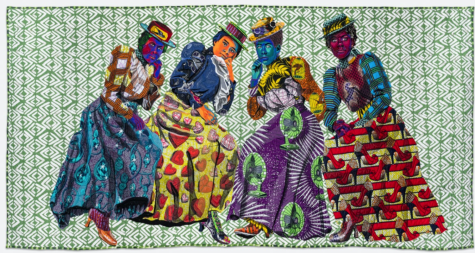 However, my mom pleaded with me to go and become more “cultured.” Consequently, my friends and I begrudgingly visited the museum. My mom was specifically interested in showing me the much-advertised Obama portraits; admittedly, they were extraordinary. Still, I found myself lost in a different exhibit entirely—the Bisa Butler exhibit. Leave it to the Obamas to expand my worldview! Allured by the vivid colors and plush textures, I had to learn more. The snippets on the wall alongside each piece further sparked my curiosity about both the artist and her unconventional style. I soon was engrossed.
However, my mom pleaded with me to go and become more “cultured.” Consequently, my friends and I begrudgingly visited the museum. My mom was specifically interested in showing me the much-advertised Obama portraits; admittedly, they were extraordinary. Still, I found myself lost in a different exhibit entirely—the Bisa Butler exhibit. Leave it to the Obamas to expand my worldview! Allured by the vivid colors and plush textures, I had to learn more. The snippets on the wall alongside each piece further sparked my curiosity about both the artist and her unconventional style. I soon was engrossed.
The hot new artist, Bisa Butler, is a New Jersey native, Howard graduate, and now a well-accomplished artist known for her unique work with textiles. Butler uses her art as a means of connection to her family and African American heritage. Quilts and fabric have been part of Butler’s life ever since her mother and grandmother taught her to sew at a young age. Using materials that African Americans, including enslaved persons, historically quilted to keep warm, her artwork harkens back to complex and deep roots. Butler uses quilting, stereotypical “women’s work,” to portray African American stories that otherwise may have been forgotten. In doing so, she both literally and figuratively turns perceived weakness into power by debunking the stereotypes of marginalized groups—primarily women and African Americans—through her art.
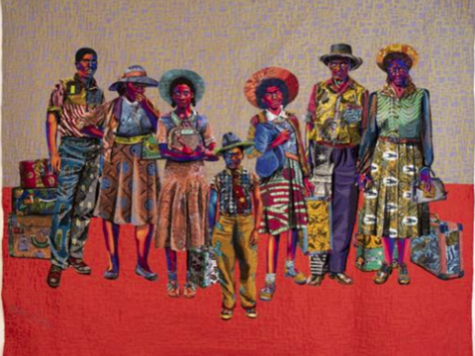 The quilt portraits themselves were inspired by photographs of African American families and individuals. Butler tells their stories; through intricate stitching and color palettes, her artwork “gives life” to the subjects she represents. Not only do Butler’s portraits feature important figures in African American history, but they also portray unknown subjects, as she feels an obligation to share a wide spectrum of stories. Spending countless hours in her home dining room, Butler takes care of her subjects. In one of Butler’s original photographs, a boy migrating North is barefoot. Butler makes an insightful decision to add shoes to the child in her interpretation to “help him out.” She not only captures who people are, but who they wish to be. Covering themes such as family, community, and migration, Butler’s main goal is for “people who are not Black to understand that we are all human beings. We have the same wants and desires, loves and fears. And as for Black people, [she] wants them to see themselves and realize that [she] recognizes who [they] are and that [they] are the same.”
The quilt portraits themselves were inspired by photographs of African American families and individuals. Butler tells their stories; through intricate stitching and color palettes, her artwork “gives life” to the subjects she represents. Not only do Butler’s portraits feature important figures in African American history, but they also portray unknown subjects, as she feels an obligation to share a wide spectrum of stories. Spending countless hours in her home dining room, Butler takes care of her subjects. In one of Butler’s original photographs, a boy migrating North is barefoot. Butler makes an insightful decision to add shoes to the child in her interpretation to “help him out.” She not only captures who people are, but who they wish to be. Covering themes such as family, community, and migration, Butler’s main goal is for “people who are not Black to understand that we are all human beings. We have the same wants and desires, loves and fears. And as for Black people, [she] wants them to see themselves and realize that [she] recognizes who [they] are and that [they] are the same.”
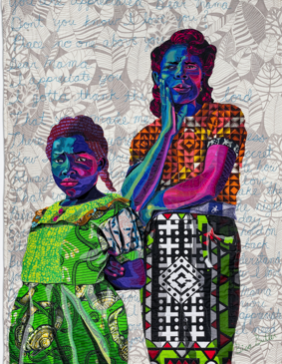
After over a year of being displayed, the Bisa Butler exhibit left the Art Institute on September 6. The departure does not change the fact that Latin students should go see Bisa Butler’s art. Not only will the captivating stitchings and colors draw your attention, but the specific details and stories of the subjects in her quilts will surely be inspiring. I am confident that your perspective on fine art and its possibilities will be greatly enhanced.

Mia Kotler ('25) is thrilled to be one of the Editors-in-Chief for The Forum this year. She is a passionate writer who enjoys expressing her views and...

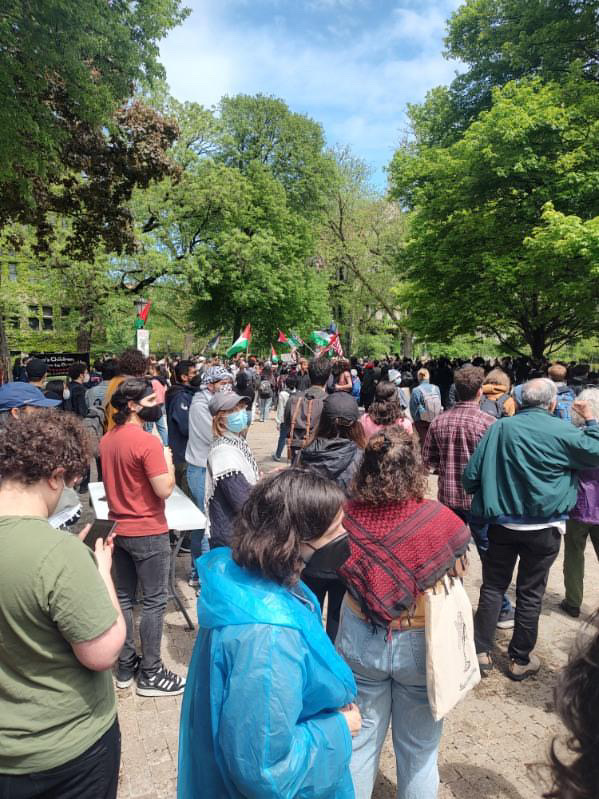




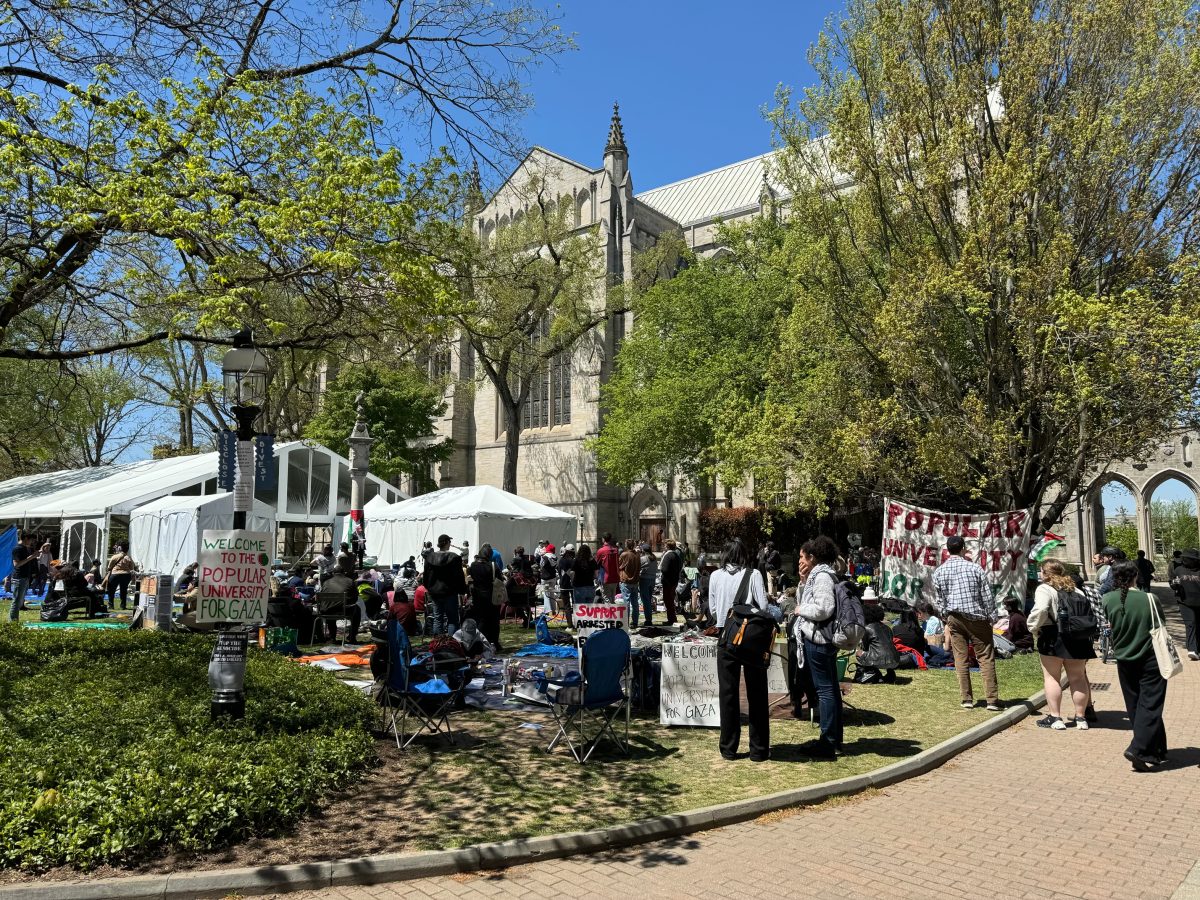
















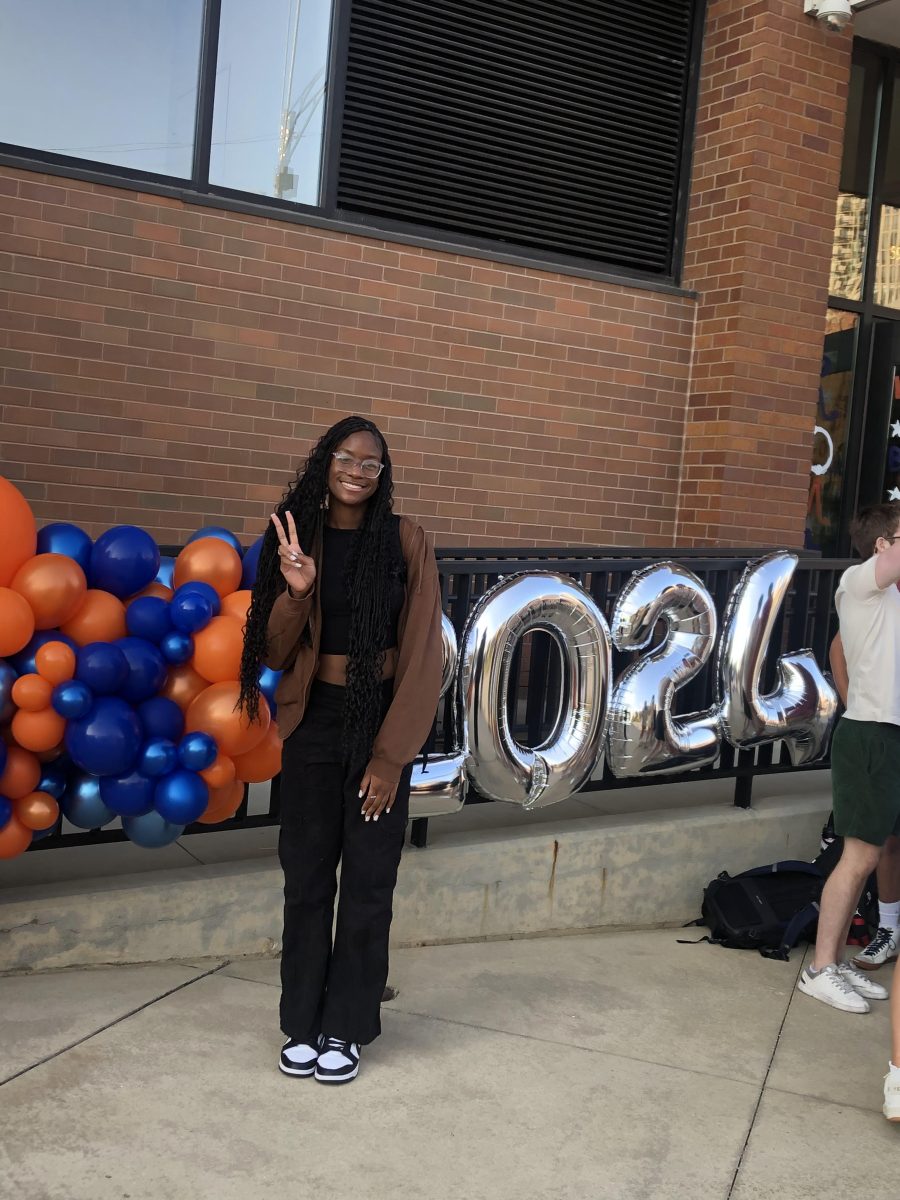










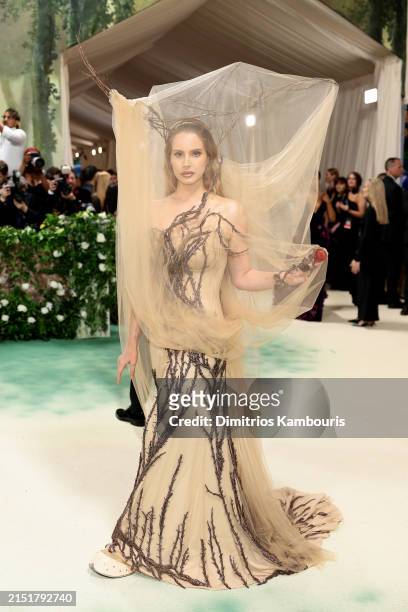


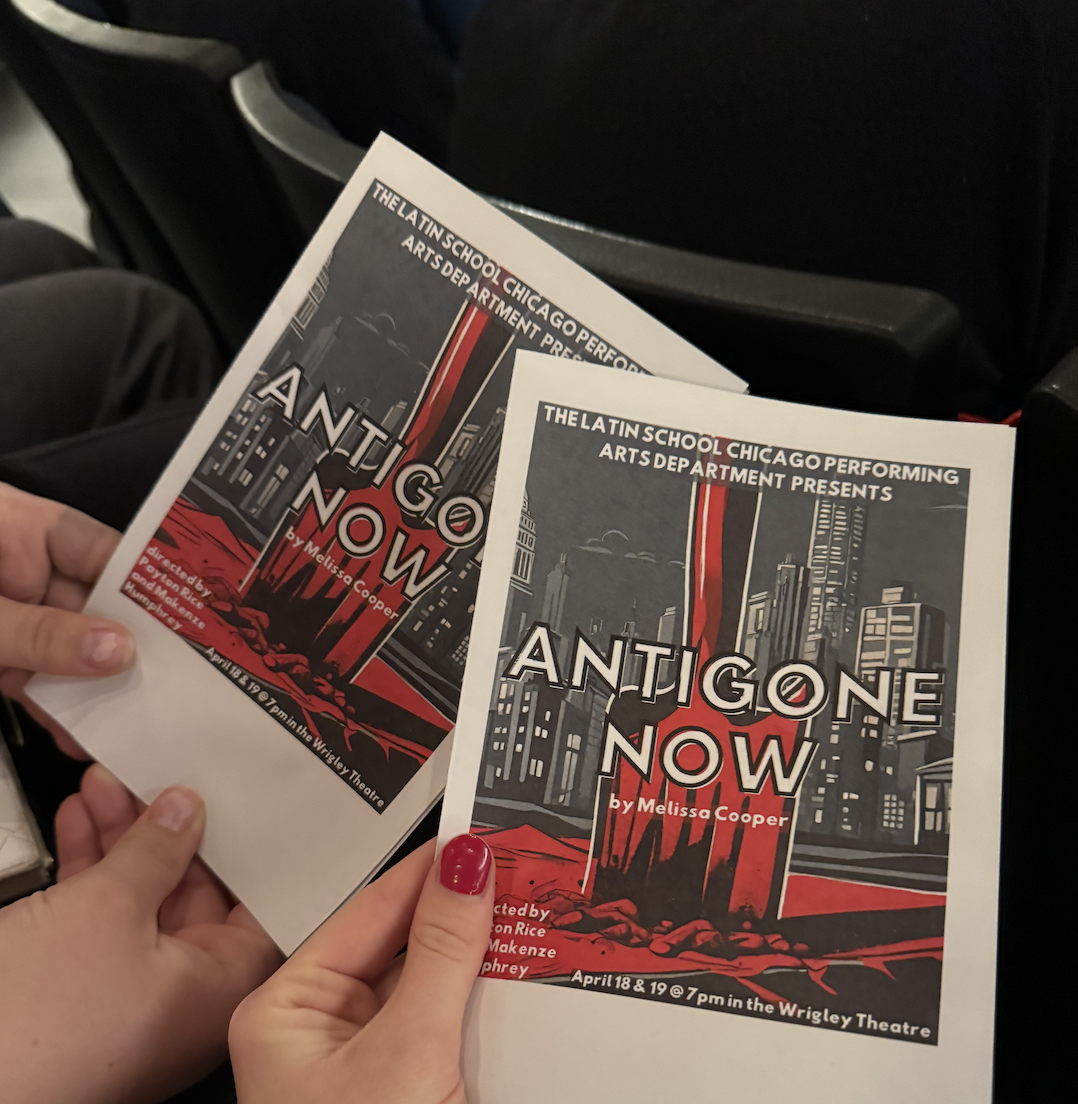
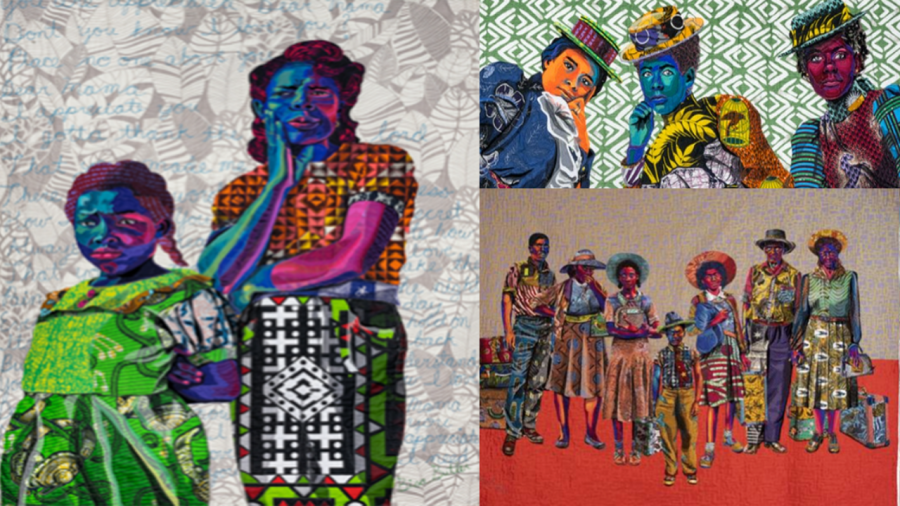

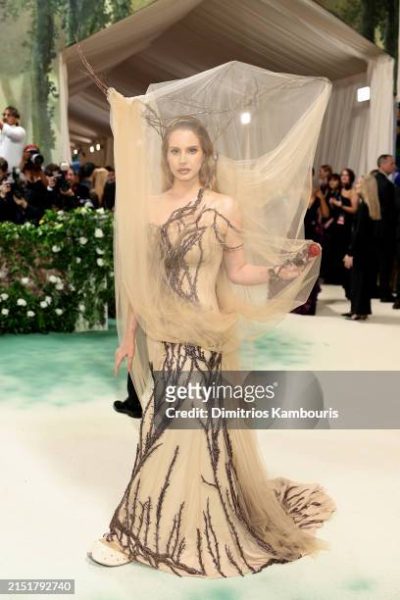


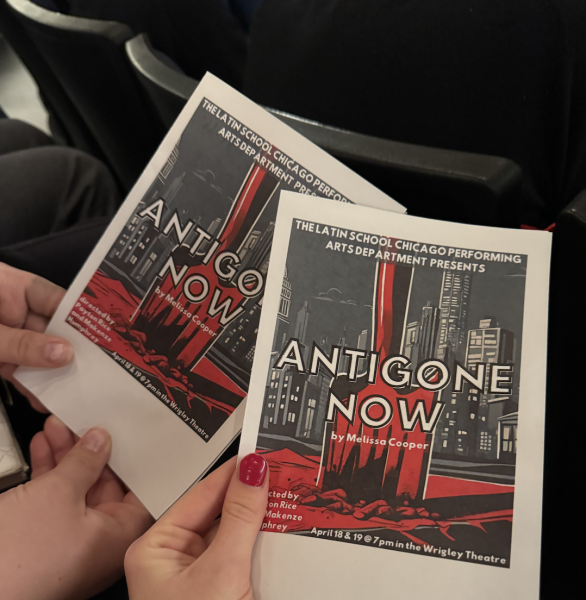
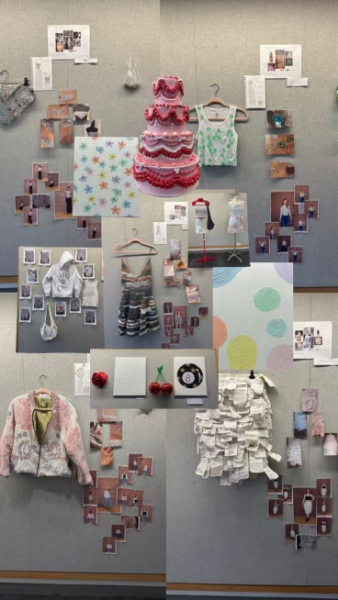
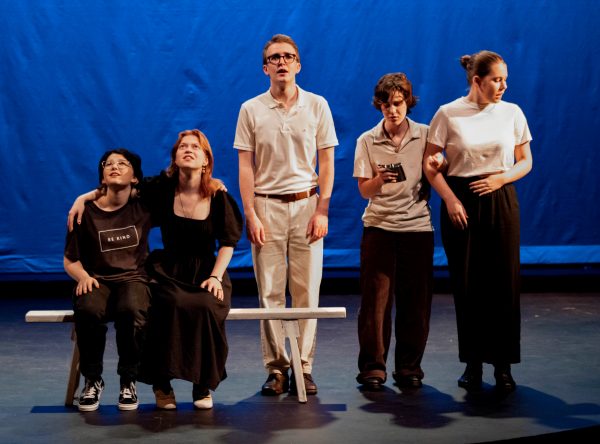

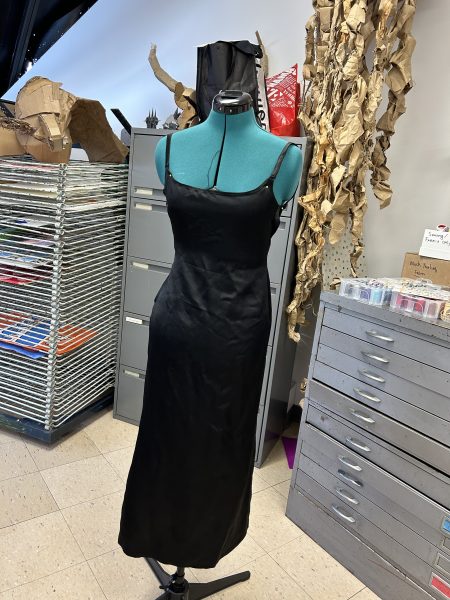


William G. • Feb 21, 2022 at 3:43 pm
I too went to the Art Institute to view the Obama portraits, and I’m so glad one of the employees directed me upstairs to view the Bisa Butler exhibit while waiting in the virtual line to view the Obama portraits. And, WOW. I’m waiting for another showing. I’ll go anywhere to view her work. It’s just awesome!